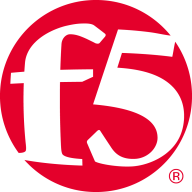

Sysdig Secure and NGINX App Protect are prominent security solutions. Users are more satisfied with NGINX App Protect's features despite Sysdig Secure being praised for its pricing and support.
Features: Sysdig Secure is valued for its comprehensive monitoring, runtime protection, and vulnerability management. NGINX App Protect is favored for robust application security, strong WAF support, and DoS protections. NGINX App Protect’s features are considered more effective.
Room for Improvement: Sysdig Secure users suggest enhancements in integration capabilities, UI navigation, and request more detailed documentation. NGINX App Protect users call for better analytics, reporting features, and simplified workflows. The gaps noted by Sysdig Secure users are seen as more impactful.
Ease of Deployment and Customer Service: Sysdig Secure is straightforward to deploy but some users find initial setup complex. Customer service receives positive feedback. NGINX App Protect is noted for easier deployment and fewer complications. Users commend NGINX App Protect’s customer service for being equally efficient.
Pricing and ROI: Sysdig Secure is perceived as cost-effective with respectable ROI, especially for mid-sized enterprises. NGINX App Protect has higher upfront costs but is noted for strong ROI based on advanced security capabilities. Users feel the investment in NGINX App Protect is justified due to its superior features.
| Product | Market Share (%) |
|---|---|
| Sysdig Secure | 2.7% |
| NGINX App Protect | 0.3% |
| Other | 97.0% |


| Company Size | Count |
|---|---|
| Small Business | 8 |
| Midsize Enterprise | 5 |
| Large Enterprise | 11 |
| Company Size | Count |
|---|---|
| Small Business | 5 |
| Midsize Enterprise | 2 |
| Large Enterprise | 3 |
NGINX App Protect application security solution combines the efficacy of advanced F5 web application firewall (WAF) technology with the agility and performance of NGINX Plus. The solution runs natively on NGINX Plus and addresses some of the most difficult challenges facing modern DevOps environments:
NGINX App Protect offers:
In the cloud, every second counts. Attacks move at warp speed, and security teams must protect the business without slowing it down. Sysdig stops cloud attacks in real time, instantly detecting changes in risk with runtime insights, a unique AI architecture, and open source Falco. Sysdig delivers live visibility by correlating signals across cloud workloads, identities, and services to uncover hidden attack paths. By knowing what is running, teams can prioritize the vulnerabilities, misconfigurations, permissions, and threats that matter most. From prevention to defense, Sysdig helps enterprises move faster and focus on what matters: innovation.
Sysdig. Secure Every Second.
We monitor all Container Security reviews to prevent fraudulent reviews and keep review quality high. We do not post reviews by company employees or direct competitors. We validate each review for authenticity via cross-reference with LinkedIn, and personal follow-up with the reviewer when necessary.